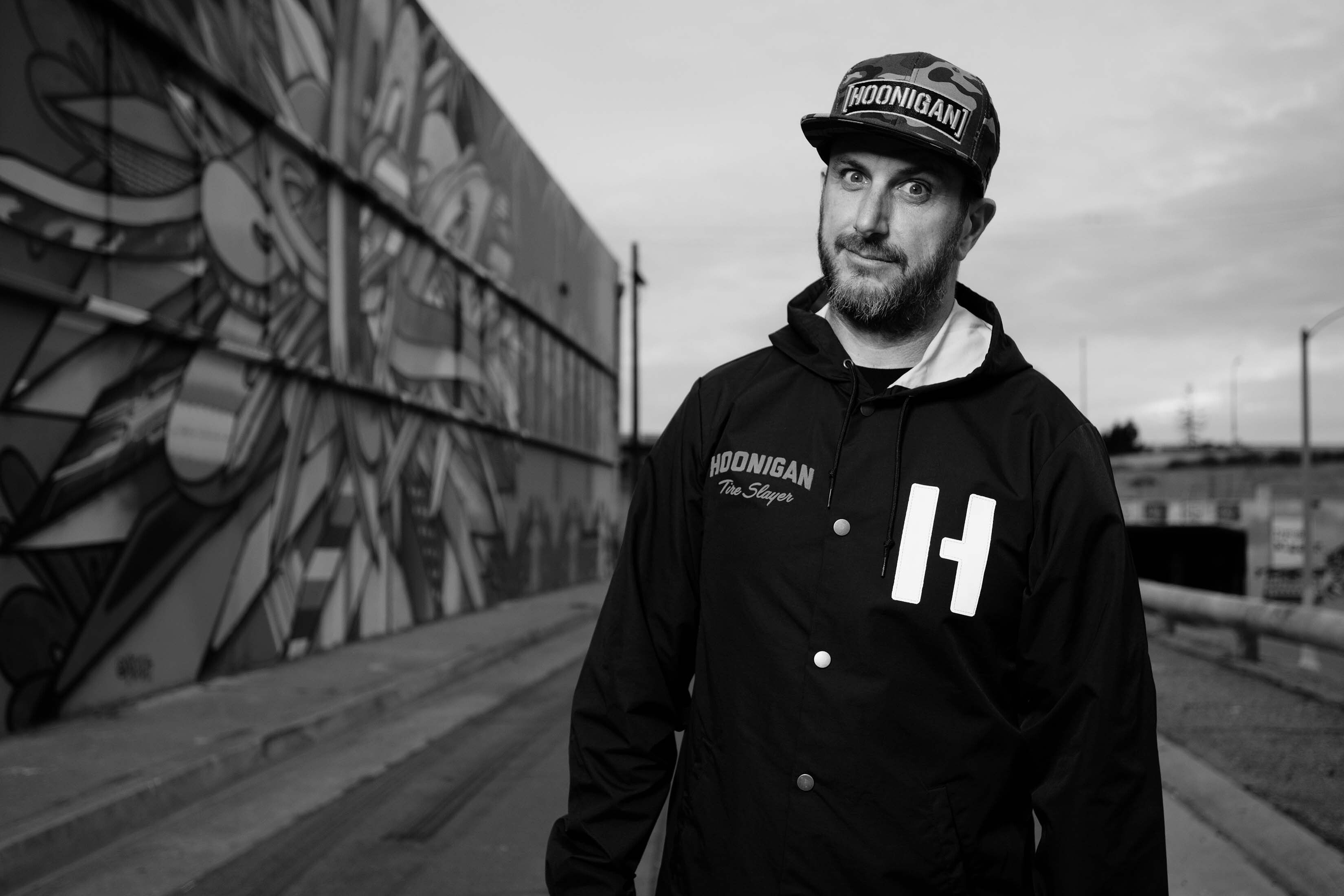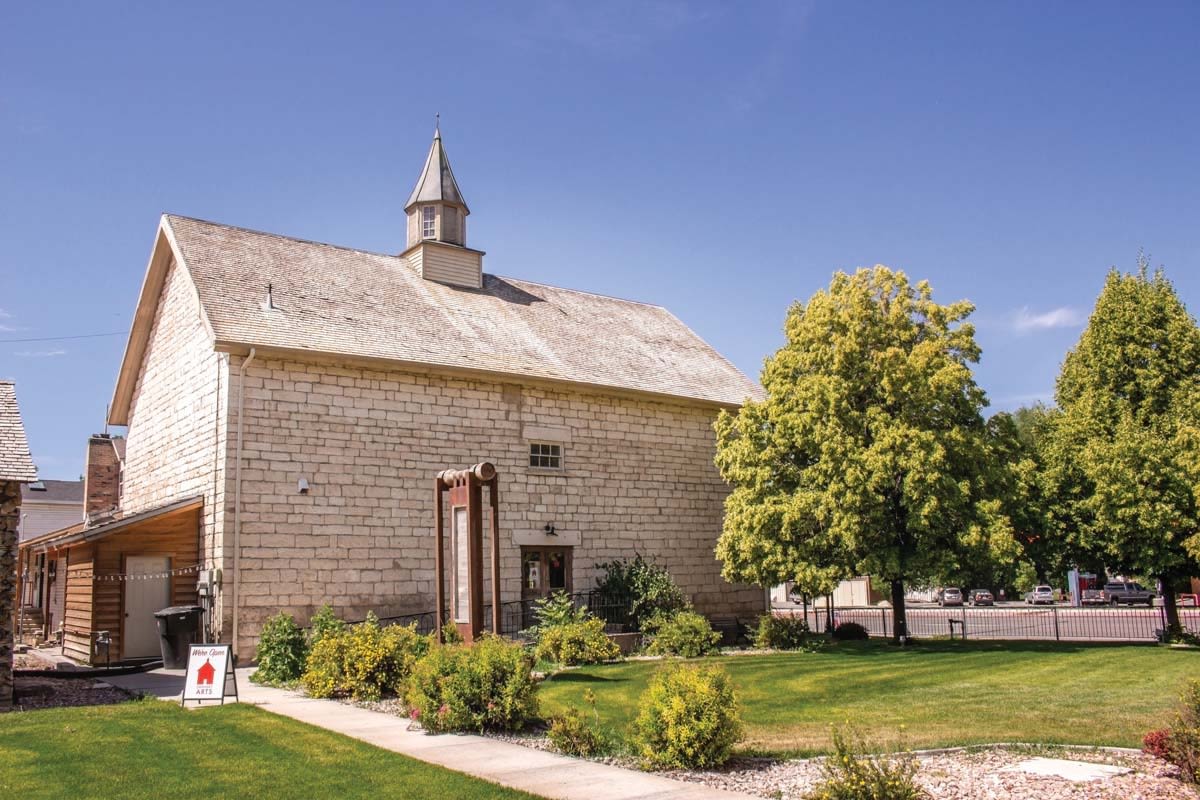Memorial Hill Salute
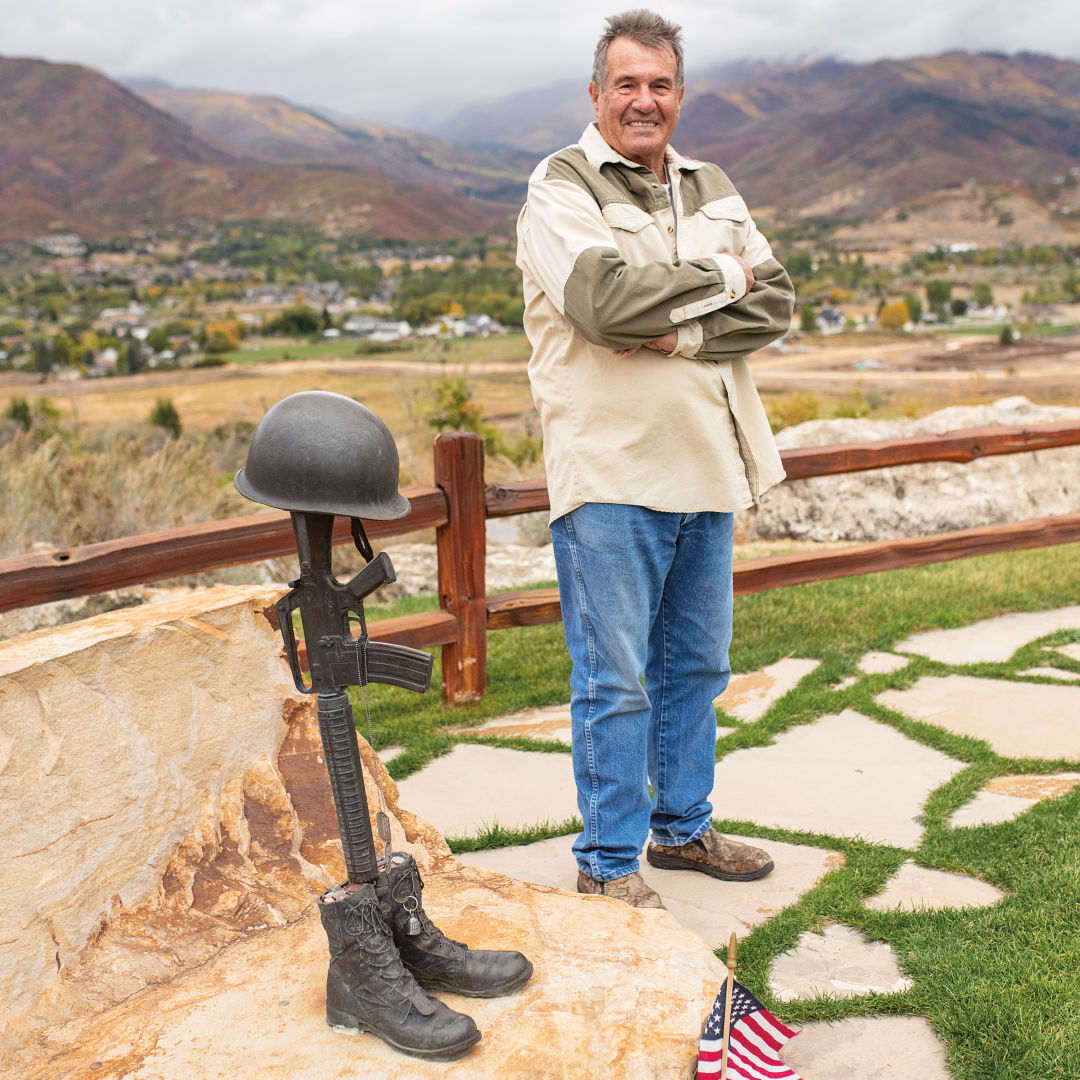
Vietnam War veteran and longtime steward of Memorial Hill Terry Edwards.
Image: Trevor Hooper
Midway’s Memorial Hill is more than a rocky, historical landmark. To those living in its shadow, the Hill is both open-air community center and geological monument devoted to a sacred cause.
Respect for the Hill’s solemnity mixes with the giddy joy of friends meeting for early-morning walks. Neighbors with dogs and kids travel the gravel road spiraling a mile up to the hilltop, where flags—American, Utah, and Service—fly sentry. Those reaching the 180-foot summit are rewarded by a panoramic, bird’s-eye view of Midway’s river valley and Mount Timpanogos veiled in clouds. And, on the night of July 4, fiery pinwheels sparkle above Memorial Hill, year after year.
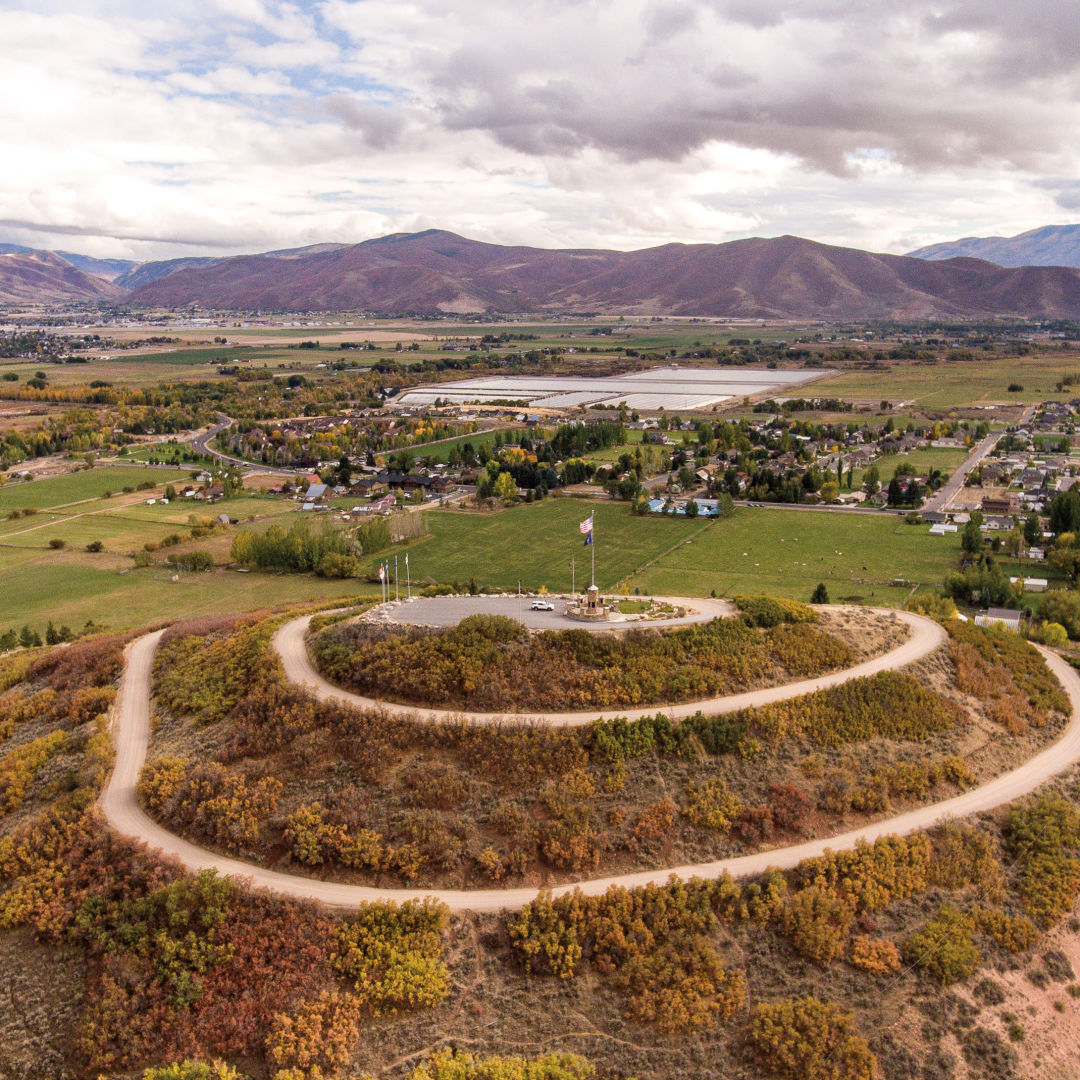
Midway’s Memorial Hill is part tribute, part community gathering place. The 2,000 names, etched into the hilltop’s black basalt, and the fallen soldier–inspired Final Salute statue honor military veterans, spanning hundreds of years, from the War of 1812 to today.
Mythical stories endure about buried Native American treasure. Old-timers insist a fabled prize rests deep inside the hallowed hill. But, according to Utah Geological Survey’s Grant Willis, “Memorial Hill is basically an extension and erosional remnant of a buried ridge,” not treasure. Most of the Hill comprises Triassic-age Thaynes Formation deposited between 245 million and 250 million years ago, when Utah was at sea level.
The hilltop monument—originally designed by Salt Lake City architect Leigh Block Turner and dedicated on Armistice Day (Veterans Day) in 1928—honors Wasatch County men and women for their service in the United States military. More than 2,000 names, stretching from the War of 1812 to recent deployments in Afghanistan and Iraq, are memorialized on black basalt mounted in columns of native travertine.
That the Hill is there for every step, inspiration, and memory is largely due to the devotion of retired Merchant Marine Daniel Ballstaedt and Vietnam War veteran Terry Edwards.

The late Daniel Ballstaedt arrived in the United States as a child and German immigrant on July 4, 1909. He served his adopted country for 30 years and was a World War ll–era merchant marine. A longtime bachelor, he eventually married, raised his family in Midway, and always displayed an American flag in his yard.
His son, Midway resident James Ballstaedt, who grew up with Memorial Hill in his backyard, recalls his father’s fierce patriotism. “[He] was so proud of being an American citizen,” James recalls. “My dad taught me what it meant to fight for our freedom.”
Growing up in the 1970s with a father old enough to be his grandfather (Daniel was 63 when James was born) gave James an intimate perspective on history, service, and civics. He remembers planting and hand-watering more than 120 trees on Memorial Hill with his dad. “That was my childhood,” he says.
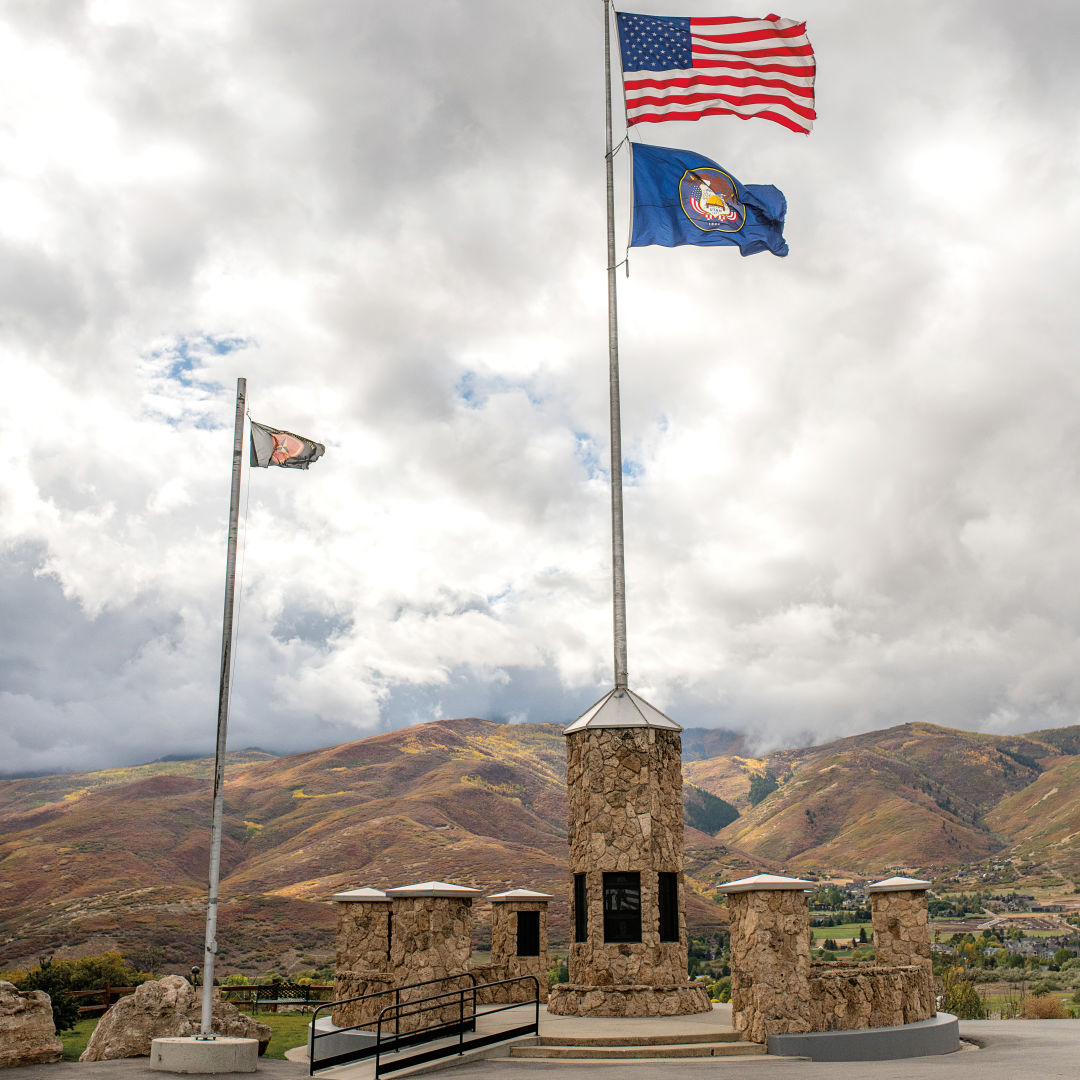
Daniel Ballstaedt is also remembered as the “flagpole climber.” On Memorial Day in 1984, the retired merchant marine scaled the hilltop’s 32-foot flagpole to replace a vandalized halyard so the Stars and Stripes could fly. James fondly recalls his father saying, “You can’t have a Memorial Day without a flag.”
Former Midway resident Terry Edwards understands. The highly decorated Vietnam War veteran says, “I could write 1,000 words on the futility of war.” Instead, Edwards continued Daniel Ballstaedt’s legacy.
Casually patrolling the Hill in his vintage Jeep Commando became Edwards’s daily routine for nearly two decades (18 years). “Memorial Hill was a damned disgrace for many years,” he says, recalling that vandals stole the original bronze name plaques and made them into belt buckles back in 1985. He retells how his friend Daniel “watered all those trees with five-gallon buckets” long before Edwards installed a water pipeline, hauled in topsoil, laid sod, and welded the entryway arch to Memorial Hill. He carefully painted that iconic arch a light blue, signifying the “Queen of Battle” infantry branch. “I just like seeing a nice memorial,” he explains, modestly brushing off the countless hours he donated to the Hill’s preservation.
Edwards’s civilian mission was lobbying Wasatch County—which owns Memorial Hill—for funds to maintain and beautify the memorial. As a result, County Manager Mike Davis budgets about $25,000 annually to raise and lower flags, manage the gate, remove trash, and permit the Midway Boosters their 4th of July fireworks.
Every summer, Edwards watered the Hill’s trees—Ballstaedt’s originals, plus an additional 50 planted by Edwards, including the native bristle cone pine, which Edwards claims “will outlive us all by thousands of years.” This icon of longevity grows next to artist Peter Fillerup’s bronze statue, The Final Salute, which features the weapon, helmet, and empty combat boots of a fallen soldier.
While Memorial Hill was annexed into Midway in December 2017, it is a small group of devoted veterans (Travis Scovgaard, Nick Lopez, and Lewis Scovel) who form a Memorial Hill restoration committee and keep watch over the Hill. Midway Mayor Celeste Johnson recognizes the value of the Hill as a landmark monument critical to the community.
“I would love to make sure it’s put into a conservation easement,” she says. Asked if she knows any Hill folklore, she replies, “All I know is it’s considered sacred.”
Recently, Terry Edwards sold his Midway home of more than 40 years. “I miss town, I miss the Hill,” he says. “It was a labor of love.”
Memorial Hill is located on River Road, two blocks north of Midway’s Main Street. It is open to the public year-round, from morning to dusk. The gravel roadway is closed in winter months to vehicles. Sunsets viewed from the high point of Memorial Hill are always worthwhile.




